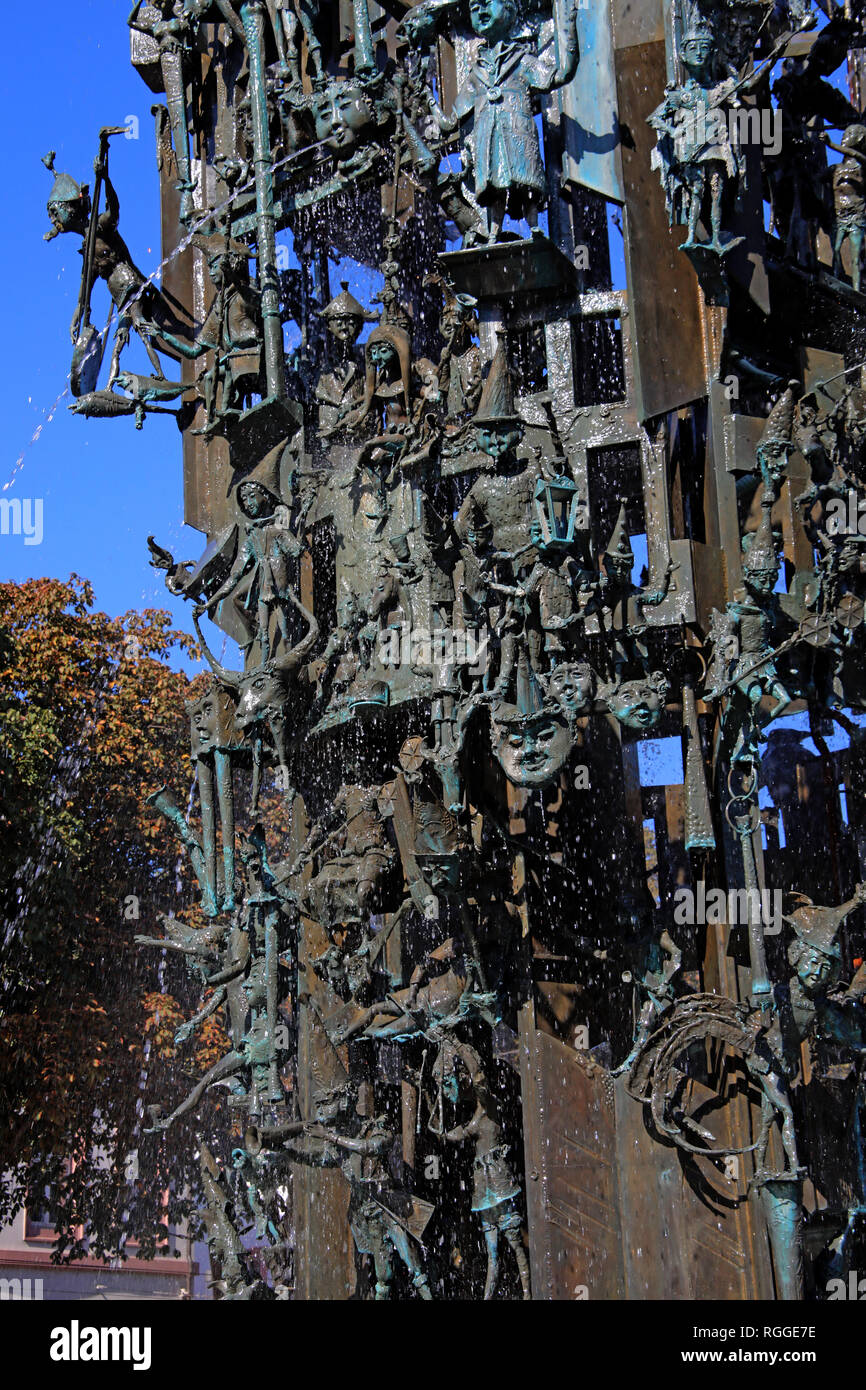Dimensioni dei file:
86,1 MB (4,5 MB Download compresso)
Apri il file immagine a tutto schermo usando il software di elaborazione delle immagini.
Dimensioni:
4480 x 6720 px | 37,9 x 56,9 cm | 14,9 x 22,4 inches | 300dpi
Data acquisizione:
18 settembre 2018
Ubicazione:
Fastnachtsbrunnen, Landeshauptstadt , Schillerpl., 55116 Mainz, Germany, Europe
Altre informazioni:
The Mainz Carnival (Mainzer Fastnacht) is a months-long citywide carnival celebration in Mainz, Germany that traditionally begins on 11 November but culminates in the days before Ash Wednesday in the spring. It is one of the largest carnival events in Germany and, along with the Cologne and Düsseldorfer carnivals, Mainz is one of the three cities prominent in the rhenish carnival tradition. Aside from the celebrations, parades, and jollity which are typical of carnival traditions in many countries, the Mainz carnival has an unusual emphasis on political and literary humor and commentary. The fountain is vitally important to all real "Meenzer" (people from Mainz): Every year on 11/11, all people celebrating Carnival in Mainz (fools) gather here when the clock on the balcony of the facing Osteiner Hof (Court of Ostein) strikes 11:11 p.m., which marks the "fifth season" of Carnival. The carnival is traditionally opened with the announcement of the 11 carnival laws. The 8.50 metre-high carnival fountain, unveiled in 1967, designed by Blasius Spreng, is a comparatively young monument in Mainz. Nevertheless, you can't imagine it not being in the cityscape. With over 200 figures from carnival and mythology, it is a symbol of typical Mainz joie de vivre Detailaufnahme des Fastnachtsbrunnens von unten Detailed view of the fountain© Landeshauptstadt Mainz Look a little closer - which figures do you recognise? Father Rhine, the monk and the man with the blockhead, the cat, Till Eulenspiegel and the city goddess, Mogontia, the purse scrubber and the paragraph rider. They are all examples of the variety of fantasy motifs that populate the Carnival fountain. During the 19th century celebrants began using the carnival as an opportunity to mock the military forces occupying the city's fortress. The uniforms of the carnival guards are still reminders of the uniforms of the Austrian, Prussian, and French troops which were present in the town between 1792 and 1866.
